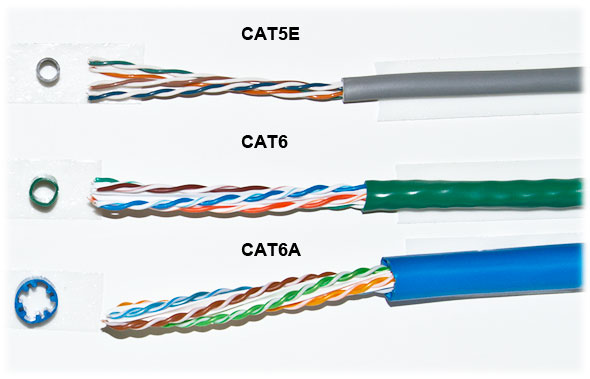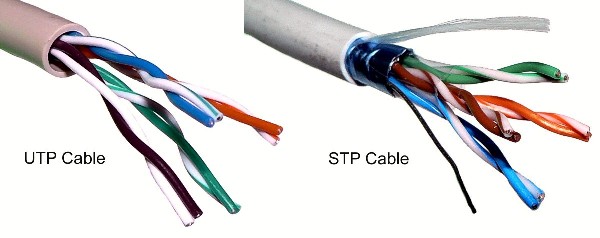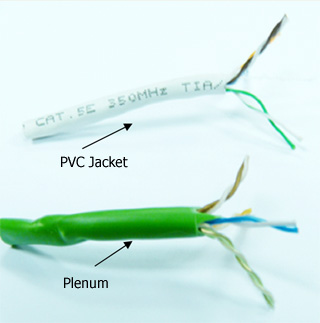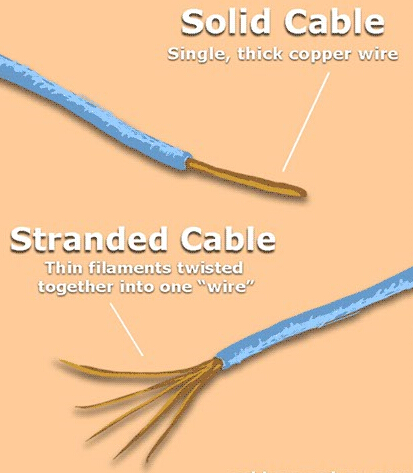There is no doubt that wire connections that based on Ethernet cables usually have faster speed yet lower latency than Wi-Fi connections. And owing to the advanced technology, modern Ethernet cable can communicate at even faster speeds. When to install a network for your home, office or business, you may come across these questions: With various types of network cables available, what do I really need? Is it a Cat5, 5e, 6 or 6a, shielded or unshielded, UTP or STP? Thus, we are supposed to answer these frequently asked questions in the article.
Based on different specifications, Ethernet cables are standardized into sequentially numbered categories (“cat”) like Cat4, Cat5, Cat6 and etc. Each cable with a higher number is a newer standard, and these cables are backwards compatible. Sometimes the category can be further divided by clarification or testing standards, such as Cat5e and Cat6a. According to these different categories, it is easier for us to know what type of cable we need for a specific application.

Cat5 (Category 5) cable serves as an older type of Ethernet network cable. It is designed to support theoretical speeds of 10 Mbps and 100 Mbps. Cat5 cable is capable of operating at gigabit speeds as well, especially when the cable is shorter, however, this cannot be guaranteed. Currently, Cat5 cable is rarely seen in the store, but there are still some with an older router, switch, or other networking device.
Cat5e (Category 5 enhanced cabling) cable is known as an improved version of Cat5 cabling. And with the enhanced signal carrying capacity, it is faster than Cat5 cable. Cat5e was made to support Ethernet, Fast Ethernet, and Gigabit Ethernet speeds over short distances and is backward compatible with Cat5. Meanwhile, it decreases the chance of crosstalk, the interference you sometimes inevitable to get between wires inside the cable. Cat5e cable also features improved durability because of improvements in the quality of the PVC protective jacket. It is more than suitable for most data cabling requirements.
Cat6 (Category 6) cable is the next step up from Cat5e. and it was specifically designed to consistently deliver 1 Gigabit Ethernet. When it comes to interference, Cat6 cable has even stricter specifications. Since the improvement in interference makes no big difference in regular usage, there is no need to rush out to Cat6 upgrade. However, when you propose to buy a new cable, you could try Cat6 because it is an improvement over the former types.
Cat6a (Cat6 augmented) is designed to 10 Gigabit speeds and is backward compatible with all the existing standards. Besides, it can be used in industries utilizing high-performance computing platforms to support very high bandwidth-intensive applications. Server farms, storage area networks, data centers and riser backbones are common 10G/Cat6a applications.
| Categories of Ethernet Cables | Signal Carrying Capacity | Typical Uses |
| Cat5 | Ethernet and Fast Ethernet | Home, Home Office, Small Office |
| Cat5e (enhanced) | Ethernet, Fast Ethernet, and Gigabit Ethernet (short distance) | Home, Small Office, Gaming Consoles, Computer Networks |
| Cat6 | Ethernet, Fast Ethernet, and 1 Gigabit Ethernet (consistent) | Large Networks, Data Centers, Offices, Cat6 Certified Networks |
| Cat6a (Augmented) | Ethernet, Fast Ethernet, and 10 Gigabit Ethernet | Large Data Centers, Large Offices, Server Farms, Future Proofing New Equipment |
Through the revolution of Ethernet cables, we know that each newer standard brings higher possible speeds and reduced crosstalk. But how those categories distinct from each other? When to use unshielded, shielded, stranded, or solid cable? The following three factors are necessary to consider.
All Ethernet cables are twisted thus the shielding is used to further protect the cable from interference. Network cable typically comes in two basic types: STP (Shielded Twisted Pair) and UTP (Unshielded Twisted Pair).
UTP: UTP cable is comprised of four pairs of carefully twisted pairs of copper wire, insulated with carefully chosen material to provide high bandwidth, low attenuation and crosstalk. UTP can easily be used for cables between your computer and the wall, and it is also the most common type of cabling used in desktop communications applications.
STP: As for STP cable, cable pairs (not individual wires) are shielded by a metallic substance, and then all four pairs are wrapped in yet another metallic protector. This is done in the purpose of preventing interference via the usage of three techniques known as shielding, cancellation and wire twisting. The problem is that STP is harder to install. You will use STP for areas with high interference and running cables outdoors or inside walls.

PVC: The most common kind of network cable is PVC. PVC is usually used as the covering for patch cables, and often for bulk cables. The problem is that PVC covered will releases toxic smoke when burning. In this case, most local fire codes prohibit PVC covered cable from being used in air handling spaces. But it is accepted to use PVC cable in wall installations. To be on the safe side, you should check your local fire codes.
Plenum: Plenum rated cable has a covering that burns without toxic smoke. In construction, plenum refers to the separate space provided for air circulation, heating, and venting. In a standard commercial building, the plenum is the space between the drop ceiling and the structural ceiling. While in residential installations, the plenum could be in a few places such as the floor when floor level air circulation is used.

By solid and stranded Ethernet cables, it means the actual copper conductor in the pairs. The differences lie in that solid cable uses a single piece of copper for the electrical conductor, while stranded uses a series of copper cables twisted together. There are two main applications for each type you should know about.

Stranded cable is more flexible and should be used at your desk, or anywhere you may move the cable around often. It is much better for patch cables where flexibility is very important.
Solid cable is not as flexible but it is also more durable, which makes it ideal for permanent installations as well as in walls and ceilings. Termination will be easier and more reliable with solid core cable. Besides, it has very good attenuation properties thus easier to send a signal over. As such, solid core is best for long runs.
As the core and backbone of any network, network cables matter to overall communication and efficiency. Cat5e can be used for most home and office applications, and Cat6 and Cat6a to establish a large network such as high speed servers and data centers. However, your final decision should be based on your need and network demand, and remember to take the above factors into consideration.